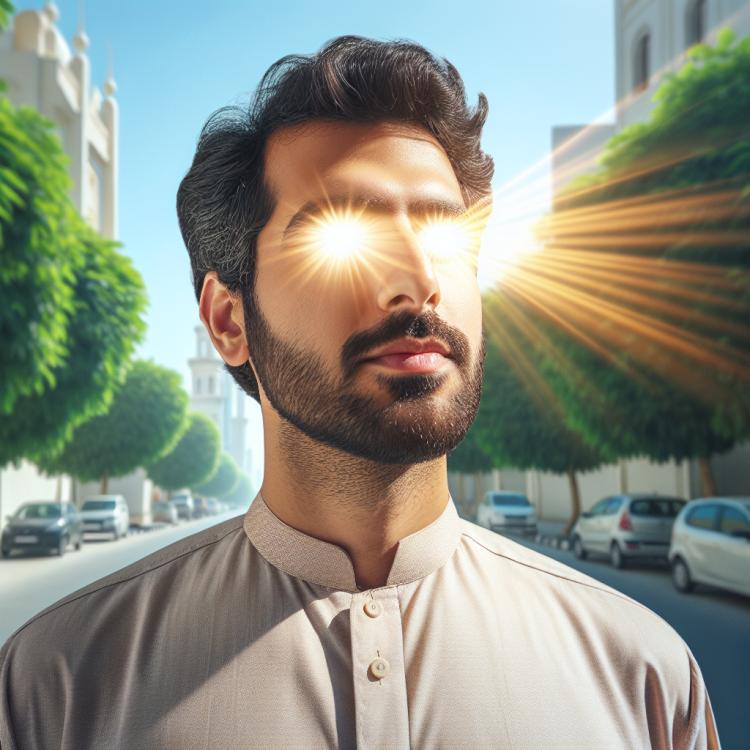
Eye discharge in bright light: causes and treatment
About the Symptom
Eye discharge in bright light can be a sign of various diseases or conditions related to the eyes. This symptom is often accompanied by unpleasant sensations such as burning, itching, or tearing. Bright light, whether from sunlight or artificial lighting, can trigger or worsen these discharges, leading to discomfort and limiting the ability to maintain a usual lifestyle.
In most cases, eye discharge may be caused by allergic reactions to environmental factors, infections such as conjunctivitis, or even mechanical irritation. The eyes may respond to strong light exposure in addition to tear discharge. It is important to note that if the discharge persists or is accompanied by other symptoms such as redness of the eyes, swelling of the eyelids, or significant deterioration of vision, it is necessary to consult a doctor for diagnosis and appropriate treatment.
Diseases
Eye discharge in bright light may signal a number of different diseases that require careful attention and timely medical assistance. One of the common documented diseases is conjunctivitis — inflammation of the conjunctiva, often occurring due to an allergic reaction or infectious process. In this case, the discharge can range from watery to purulent, and bright light can exacerbate discomfort.
Another possible cause is keratitis, inflammation of the cornea, which can also provoke discharge and increased sensitivity to light. This disease can affect people who spend a lot of time outdoors without eye protection. The appearance of discharge and photophobia may also be a result of more serious conditions, such as uveitis, which is characterized by inflammation of the vascular layer of the eye.
- Conjunctivitis
- Keratitis
- Uveitis
- Allergic reactions
- Dry eye syndrome
- Glaucoma
- Iritis
Diagnosis
When there are eye discharges occurring in bright light, an important step is accurate and timely diagnosis. An ophthalmologist will start with a detailed conversation during which they will collect a medical history, including information about the presence of allergies, eye diseases, and possible injuries or prolonged exposure to sunlight. After that, a series of clinical investigations will follow. The main goal of the diagnosis is to determine the cause of the discharges and identify any possible accompanying diseases.
The main diagnostic methods include visual examination, the use of special equipment such as a slit lamp, as well as tests to determine the level of tear fluid. In some cases, additional studies may be required, such as microscopy of eye discharges or tests for infections. All this information will help the doctor establish an accurate diagnosis and develop an optimal treatment strategy.
List of diagnostic services:
- Visual examination of the fundus
- Slit lamp examination
- Tear production test
- Bacteriological culture of eye discharges
- Allergy testing
- Visual acuity assessment
- Tonometr y (intraocular pressure measurement)
- Fluorescein angiography
Which doctor to consult
When experiencing discharge from the eyes against the background of bright light, it is important to seek medical help in a timely manner. Such symptoms may signal various diseases that require qualified diagnosis and treatment. The first thing to do is to make an appointment with an ophthalmologist, who is a specialist in eye diseases. The ophthalmologist will conduct an examination and determine the extent of the damage, as well as prescribe any necessary additional tests.
In some cases, if the discharge is accompanied by discomfort, itching, or other alarming symptoms, a consultation with related specialists, such as an allergist or dermatologist, may be required. This is because some eye conditions can be caused by allergic reactions or skin infections. Early consultation with a doctor will help prevent the development of possible complications and restore eye health.
- Ophthalmologist
- Allergist
- Dermatologist
- Infectious disease specialist
- Immunologist
Types of Eye Discharge in Bright Light
Eye discharge in bright light can have various characteristic signs that can help determine their cause. One of the most common types of discharge is clear or watery tears, which may appear as a reaction to irritation caused by light. This discharge typically has no odor and can be triggered by the body’s general response to bright light.
Another common variant is mucous discharge, which may be a sign of an allergic reaction. It is often accompanied by itching or redness of the eyes. Finally, purulent discharge usually indicates an infectious process, such as conjunctivitis. This discharge may have a yellowish or greenish tint and generally requires consultation with a specialist for diagnosis and treatment.
- Clear tears
- Mucous discharge
- Purulent discharge
Causes of Eye Discharge in Bright Light
Eye discharge in bright light can be caused by many factors, including allergic reactions, infectious diseases, and injuries. Bright light can irritate the eyes, leading to the production of tears and other secretions as a protective response from the body. When exposed to intense light, the eyes may start to produce more tears to lubricate and protect the cornea from potential damage.
Another common cause of discharge may be inflammatory processes, such as conjunctivitis, which can have allergic, bacterial, or viral origins. The presence of discharge in combination with bright light may indicate an allergy to pollen, dust, or other allergenic substances that are exacerbated by sunny conditions. It should also be noted that harmful factors, such as smoke or strong odors, can worsen the situation, causing additional eye discharge.
- Allergic rhinitis
- Conjunctivitis (allergic, viral, bacterial)
- Keratitis
- Eye injuries
- Dry eye syndrome
Common Related Pathologies
Eye discharge in bright light can be associated with various pathologies that can significantly affect eye health. One of the most common causes is conjunctivitis, inflammation of the conjunctiva, which can be triggered by infections, allergic reactions, or chemical irritants. Conjunctivitis can manifest not only as discharge but also as redness and itching of the eyes, especially in response to bright light.
Another condition related to this symptom is allergic rhinitis, which can cause swelling and inflammation around the eyes, leading to increased discharge when exposed to bright light. Additionally, if a patient has dry eye syndrome, bright light can cause irritation, which in turn provokes the secretion of tear fluid. These conditions require careful attention and sometimes comprehensive treatment to alleviate symptoms.
- Conjunctivitis
- Allergic rhinitis
- Dry eye syndrome
- Keratitis
- Blepharitis
- Lacrimal gland pathologies
Expert Opinion
Discharge from the eyes in bright light can be a sign of various diseases and conditions that require careful medical examination and diagnosis. Specialists in the field of ophthalmology emphasize that such symptoms should not be ignored, as they may indicate more serious health issues, such as inflammation, infections, or allergic reactions. It is also important to consider that bright lighting can enhance uncomfortable sensations, causing additional tear fluid discharge.
Furthermore, experts highlight the importance of timely consultation with a doctor when discharge occurs. In the early stages, many diseases can be easily treated or corrected, significantly increasing the chances of complete recovery. Ophthalmologists recommend against self-medication and attempting to eliminate discharge independently, as this may worsen the condition. Specifically tailored procedures and medications will help quickly relieve symptoms and address the underlying cause of their occurrence.

Treatment of Eye Discharge under Bright Light
The treatment of eye discharge that occurs under bright light depends on the cause of this symptom. Usually, therapy includes the use of medications that help eliminate the underlying condition. For example, if the discharge is caused by allergies, antihistamines may be prescribed. In the case of inflammatory processes, anti-inflammatory drops or ointments are necessary. For bacterial infections, antibiotic medications are often used.
It is important to note that self-medication is not recommended in this case, as improper choice of medications can worsen the condition. Additionally, individual patient characteristics and possible allergic reactions should be taken into account. Therefore, it is important to consult a specialist for an accurate diagnosis and appropriate treatment.
- Antihistamine eye drops
- Anti-inflammatory medications
- Antibiotics for bacterial infections
- Moisturizing drops to relieve dryness
- Immunomodulators to enhance the body’s resistance
Complications
Discharge from the eyes in bright light may not just be a symptom but a sign of more serious diseases. Ignoring this symptom and the lack of timely diagnosis can lead to the development of complications that may negatively affect a person’s health. Initial symptoms, such as redness, itching, or discharge, can lead to more serious problems if one does not consult a doctor.
One possible complication is the development of conjunctivitis, which can become chronic if adequate treatment is not provided. Additionally, discharge may indicate infectious diseases, such as keratitis, which can lead to vision loss if left untreated. Complications can range from discomfort and chronic eye fatigue to more serious visual function disorders that may require surgical intervention.
- Chronic conjunctivitis
- Keratitis
- Infection of the eye membrane
- Loss of sharpness of vision
- Increased sensitivity to light